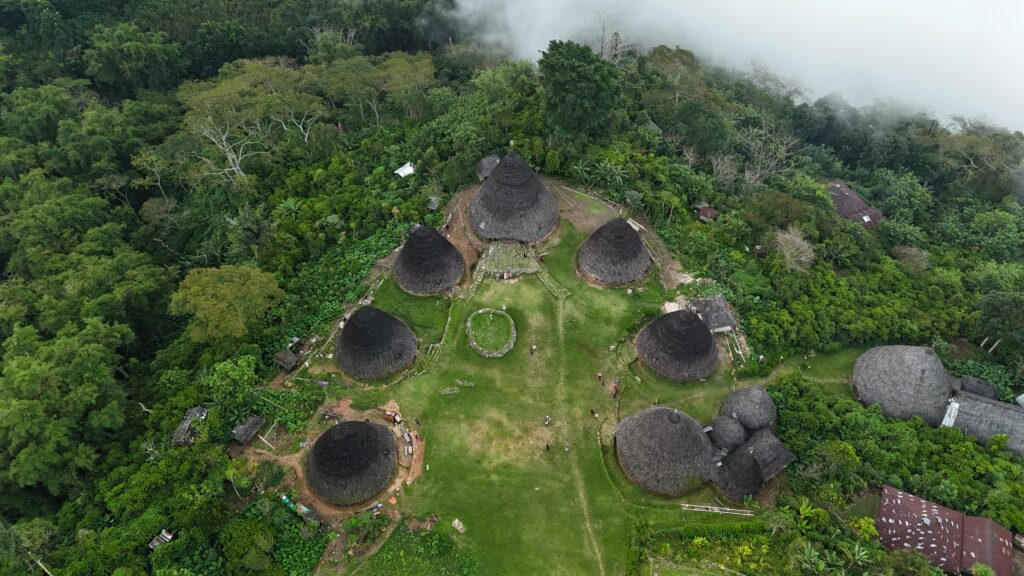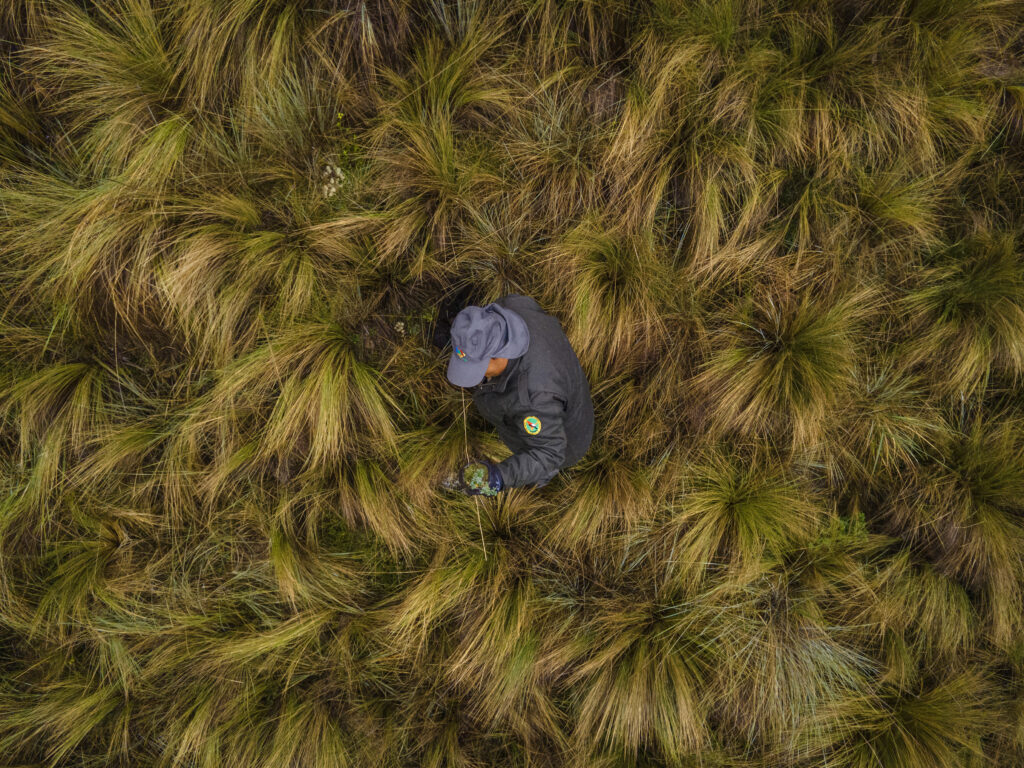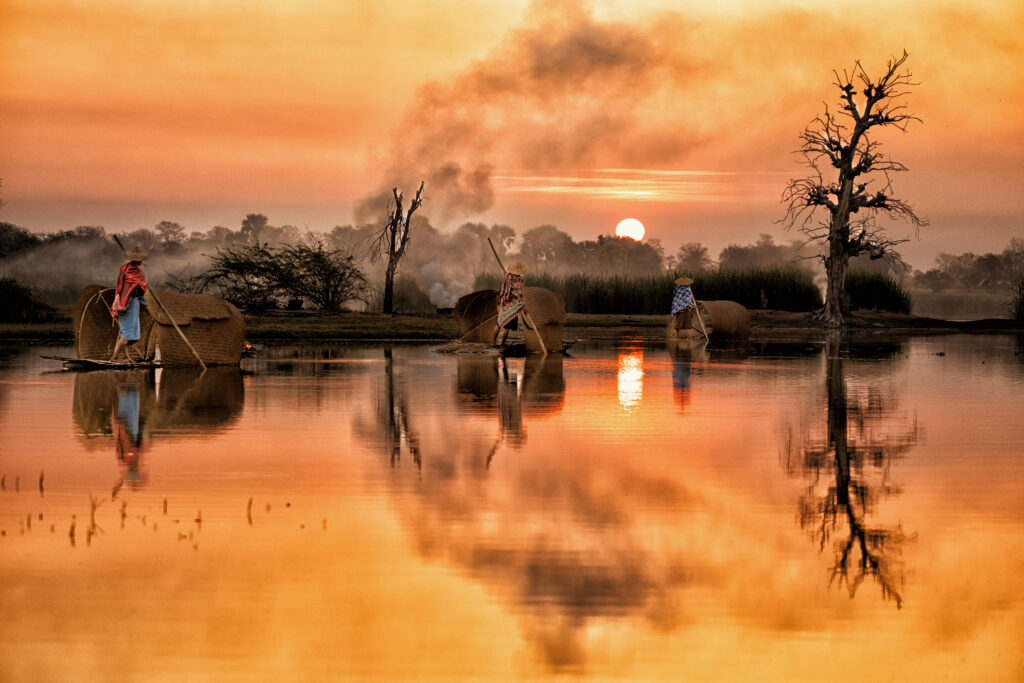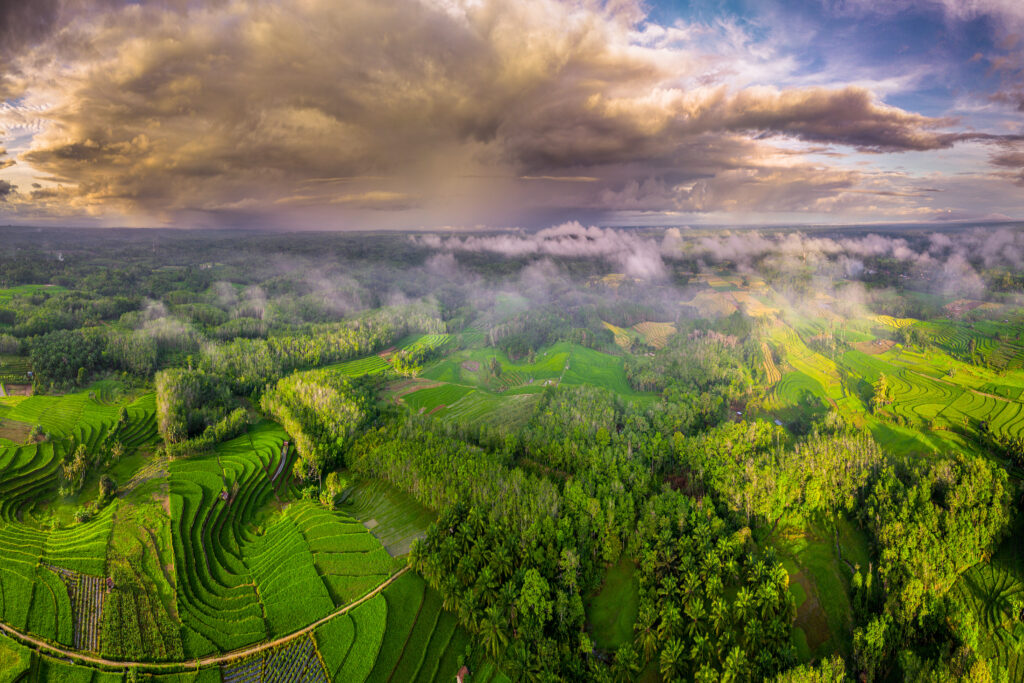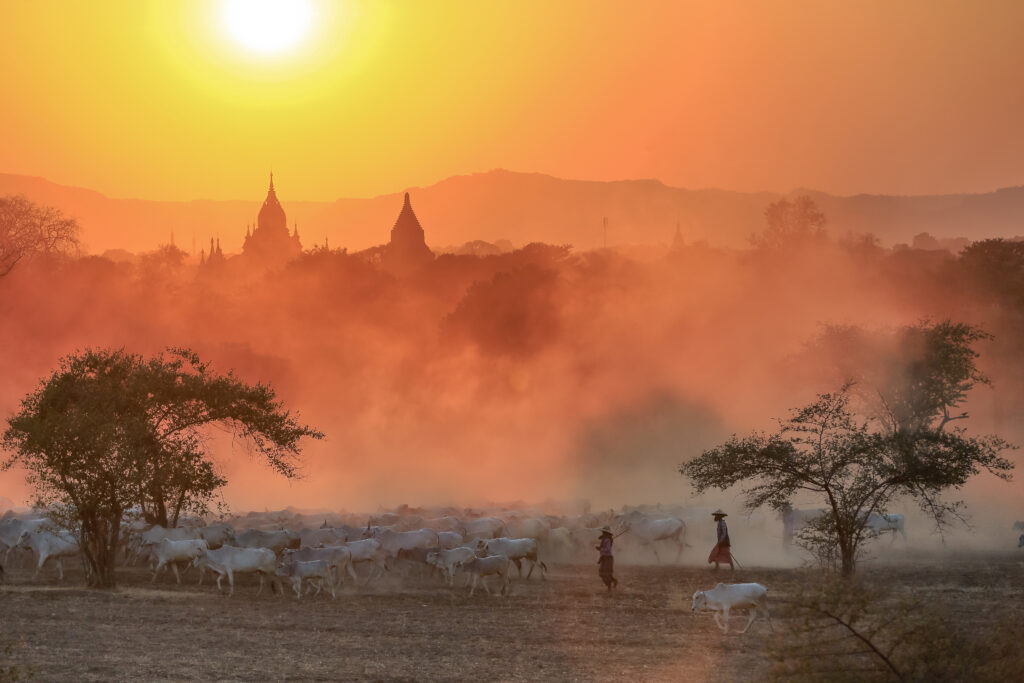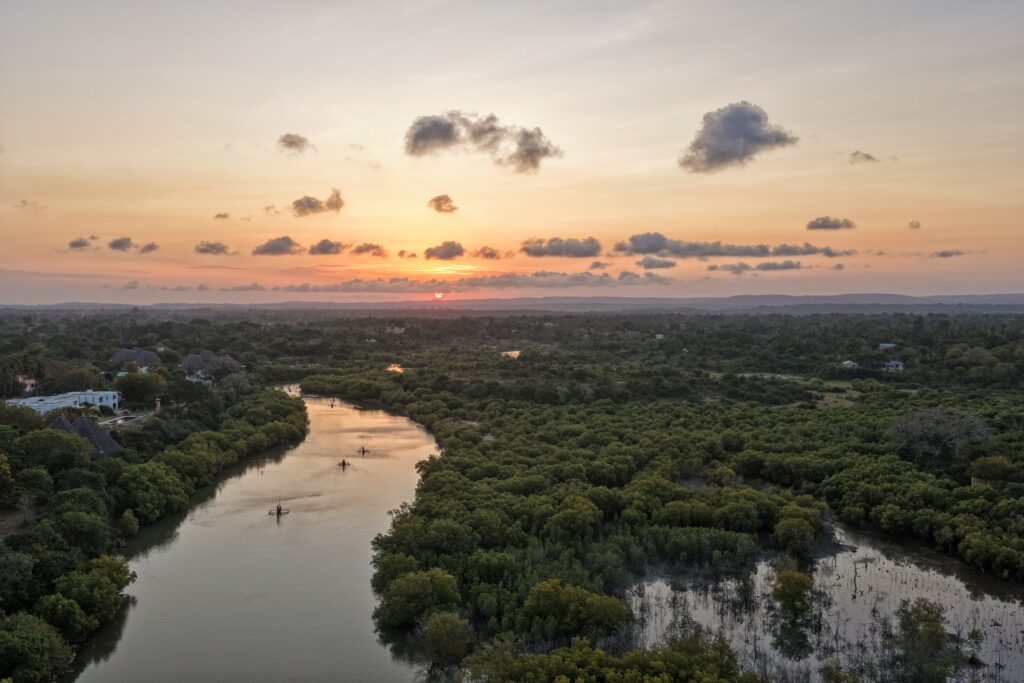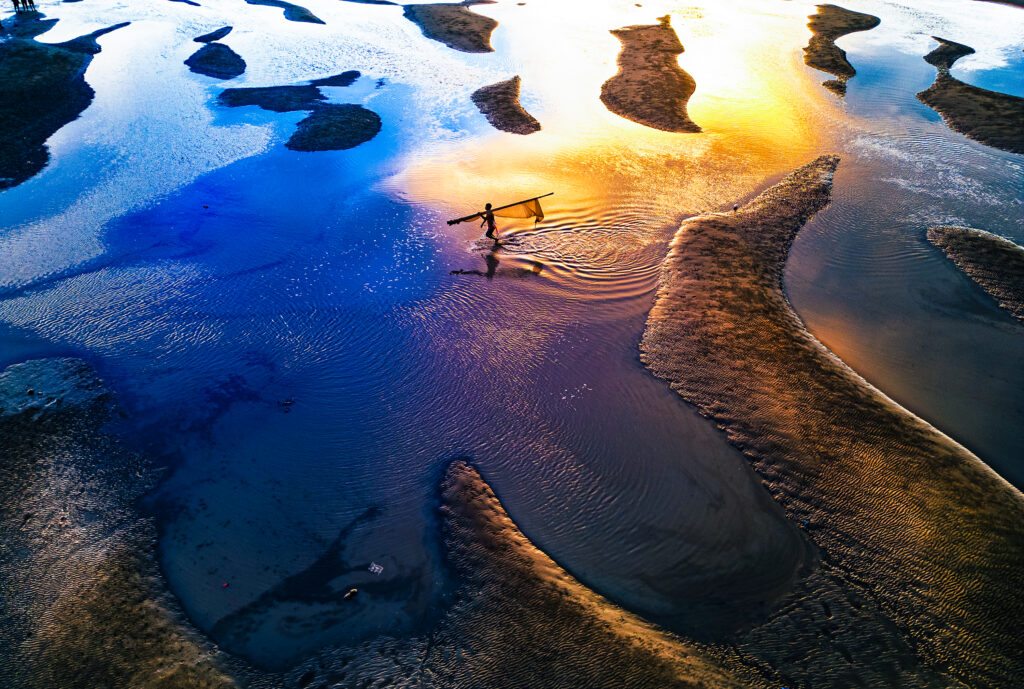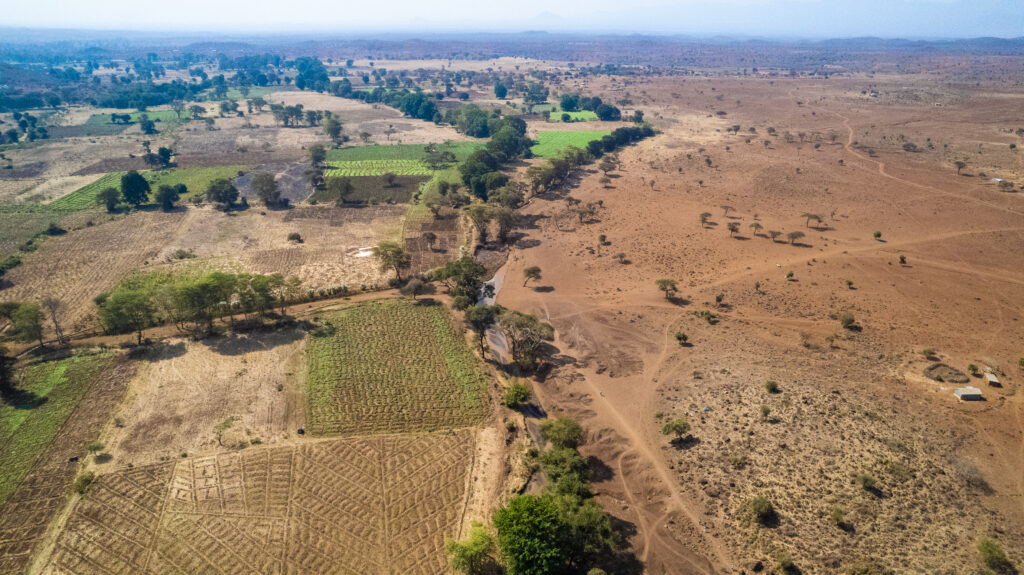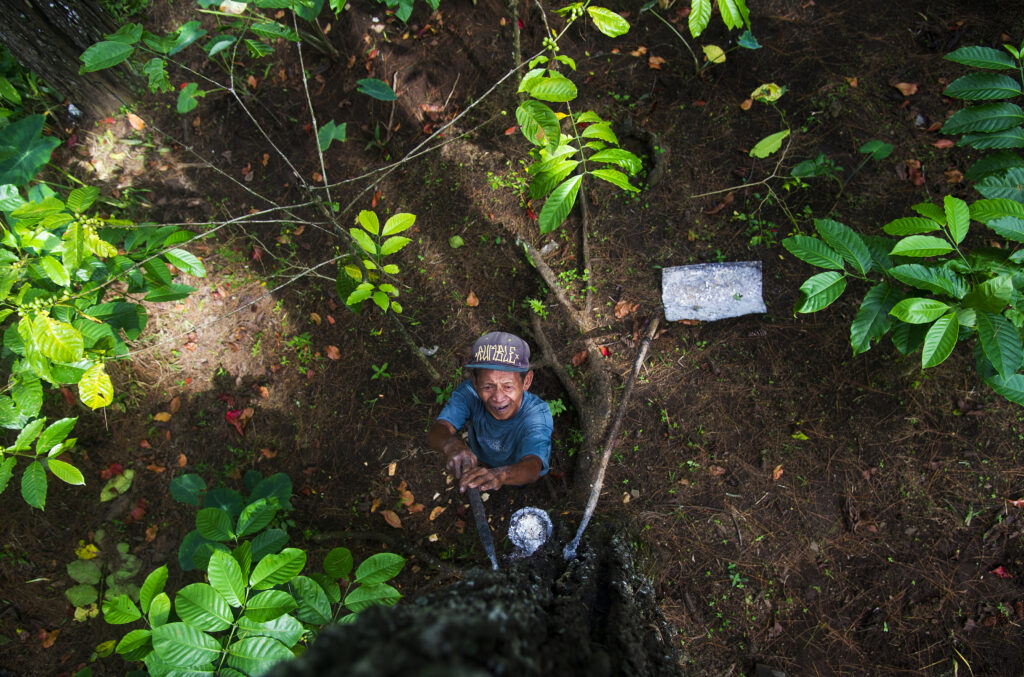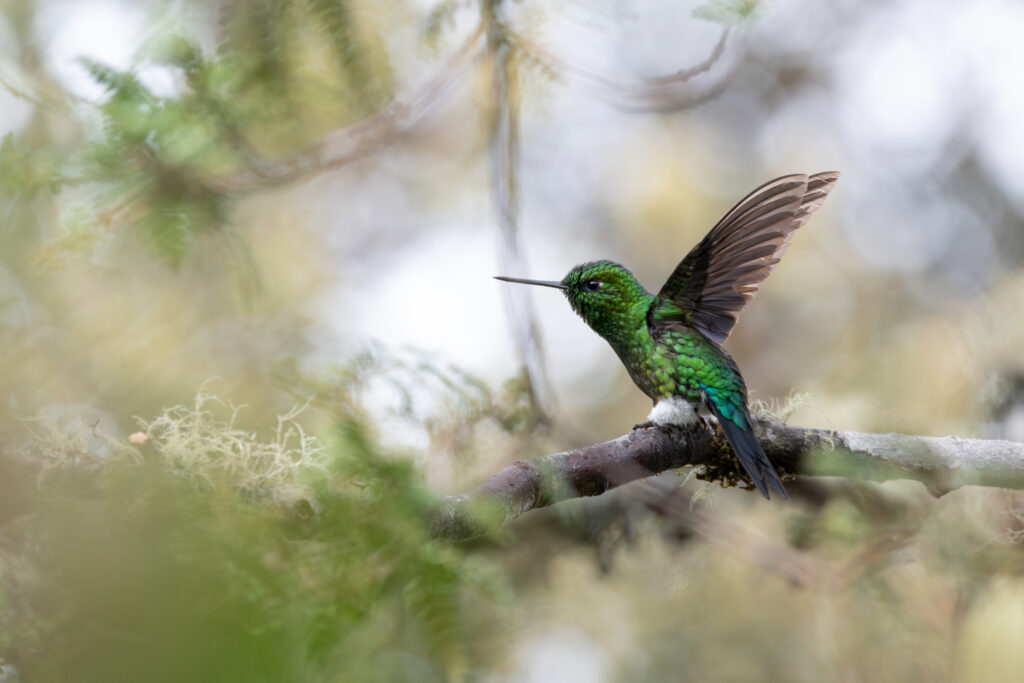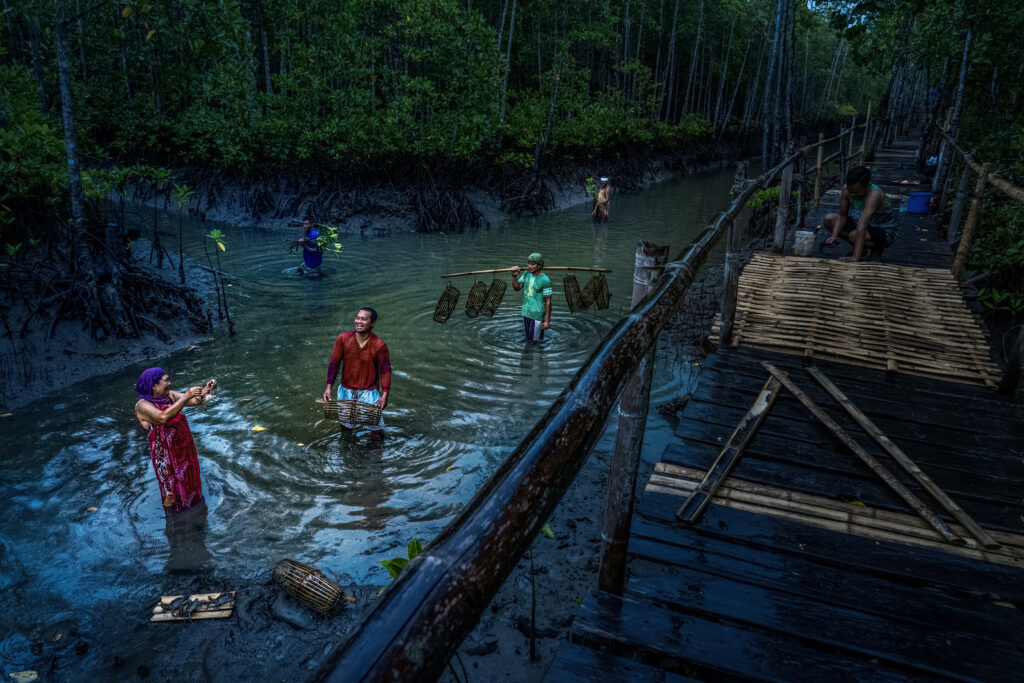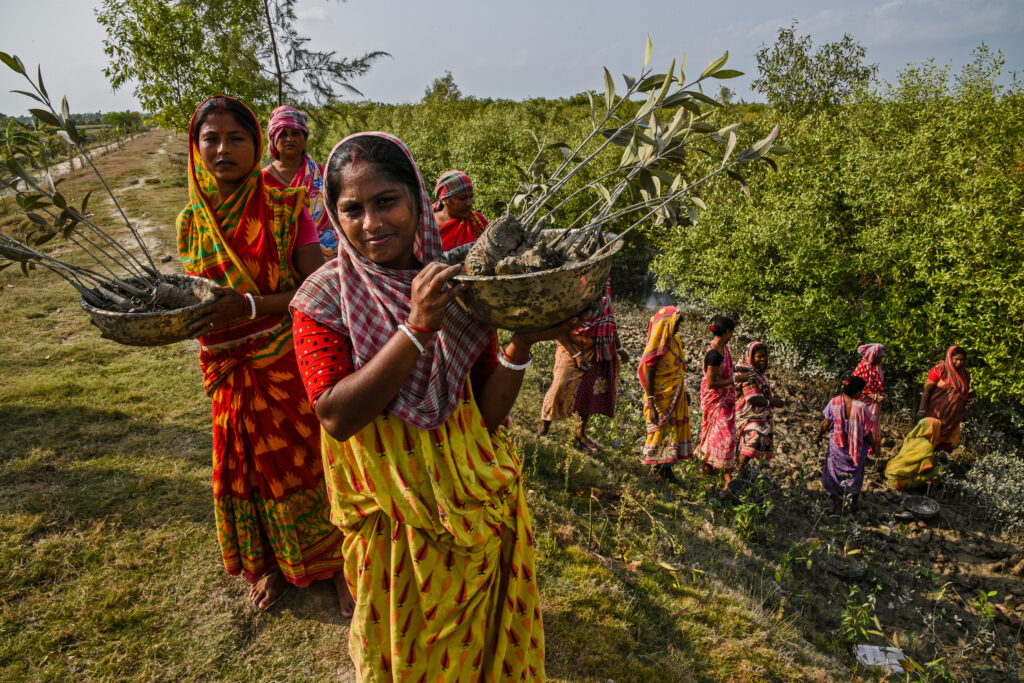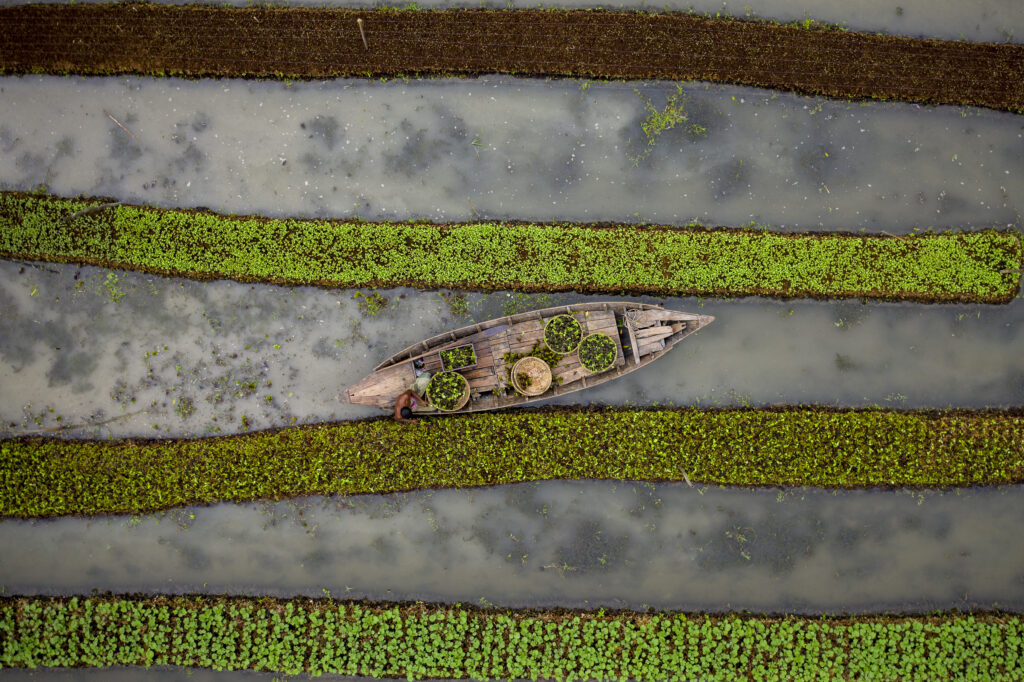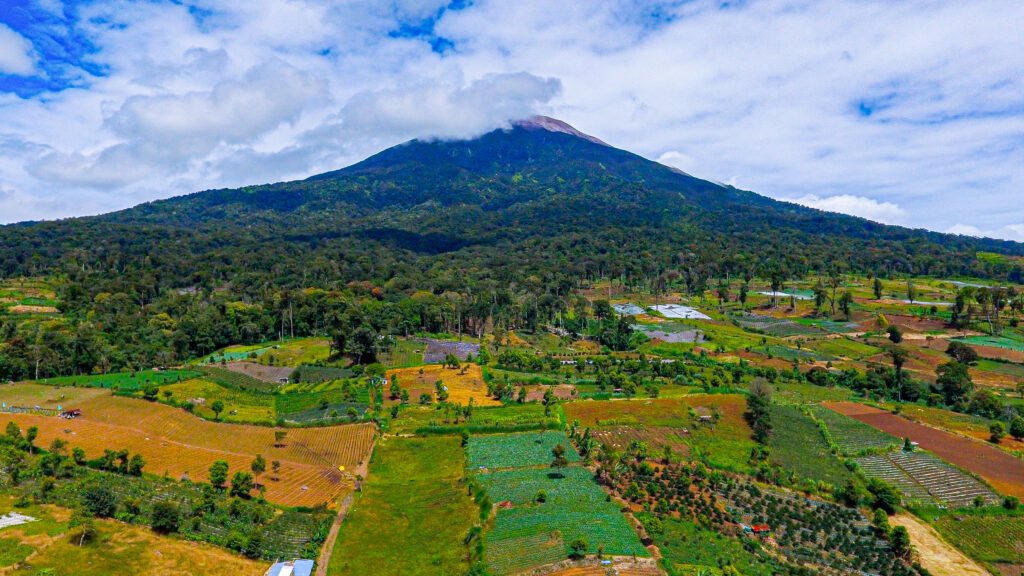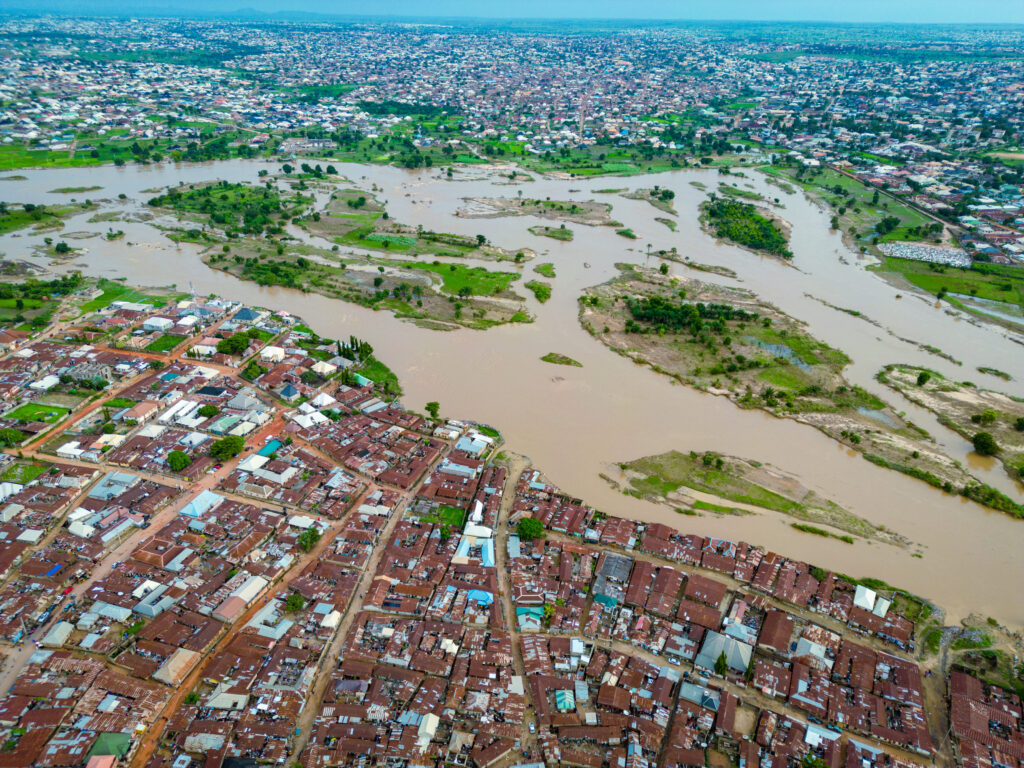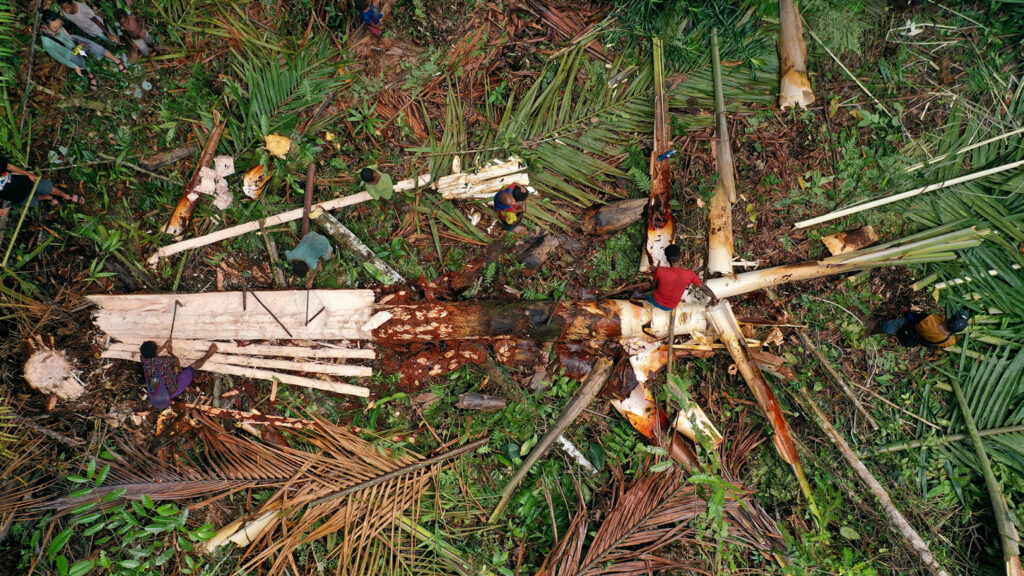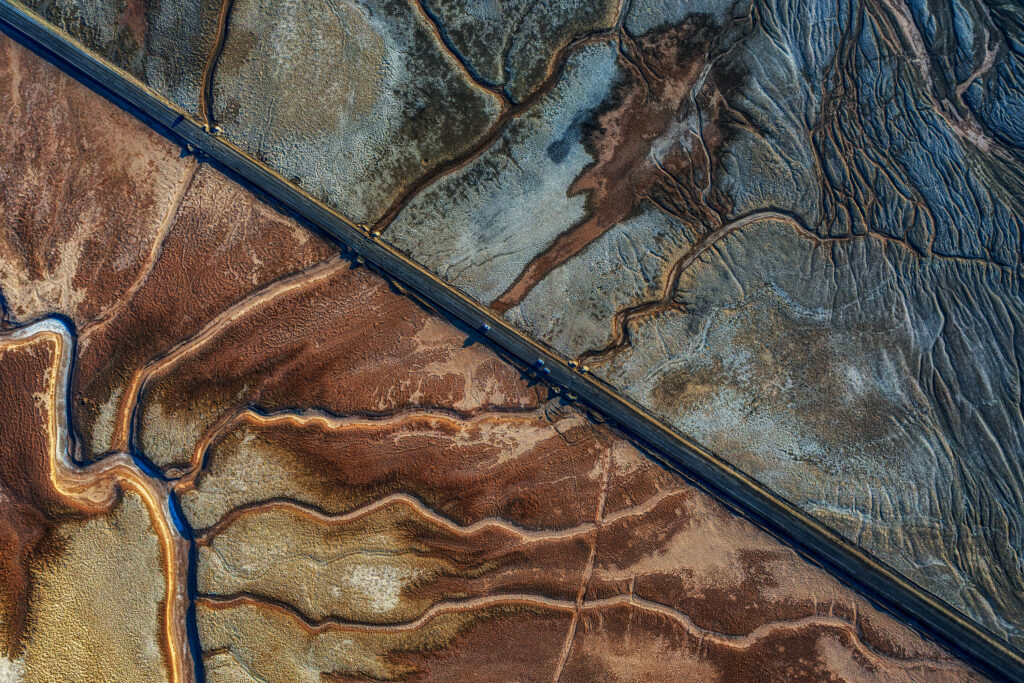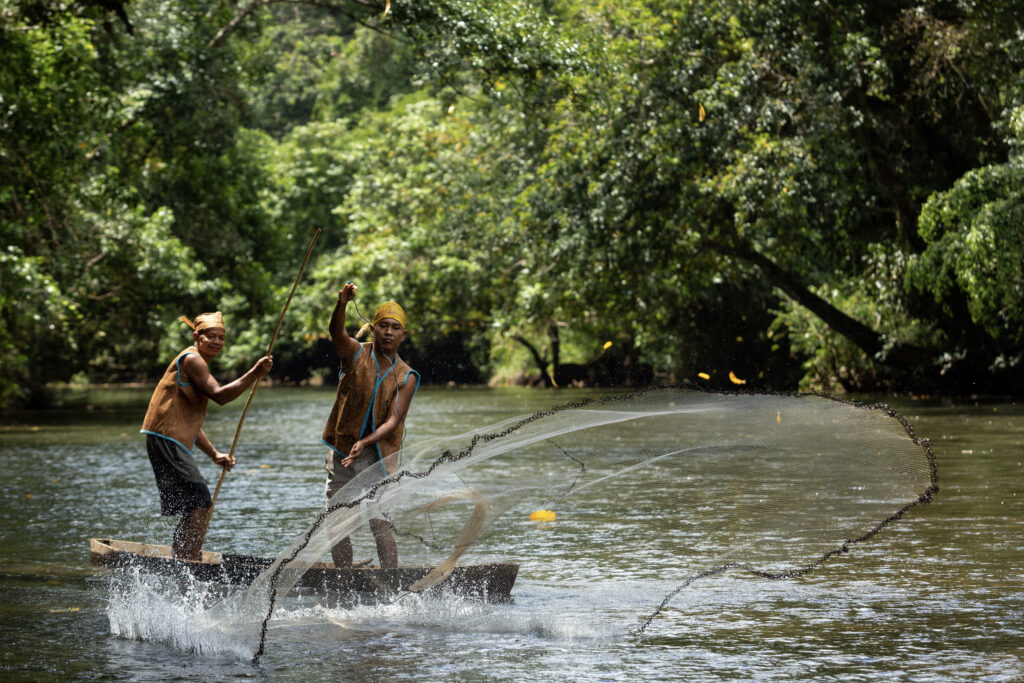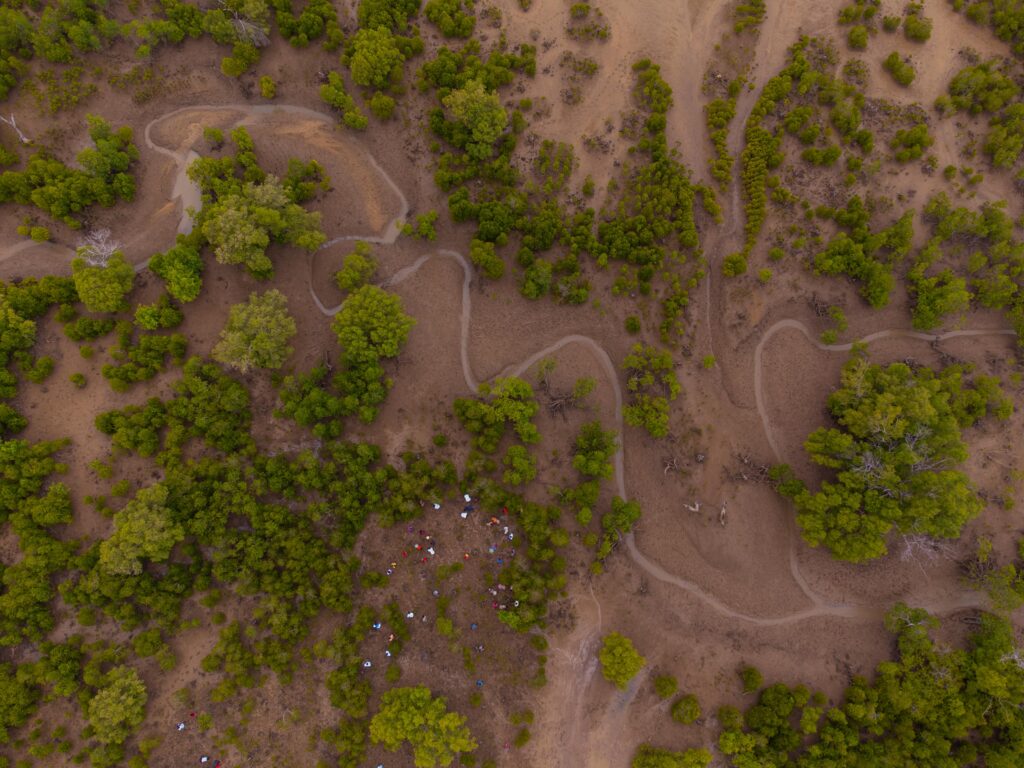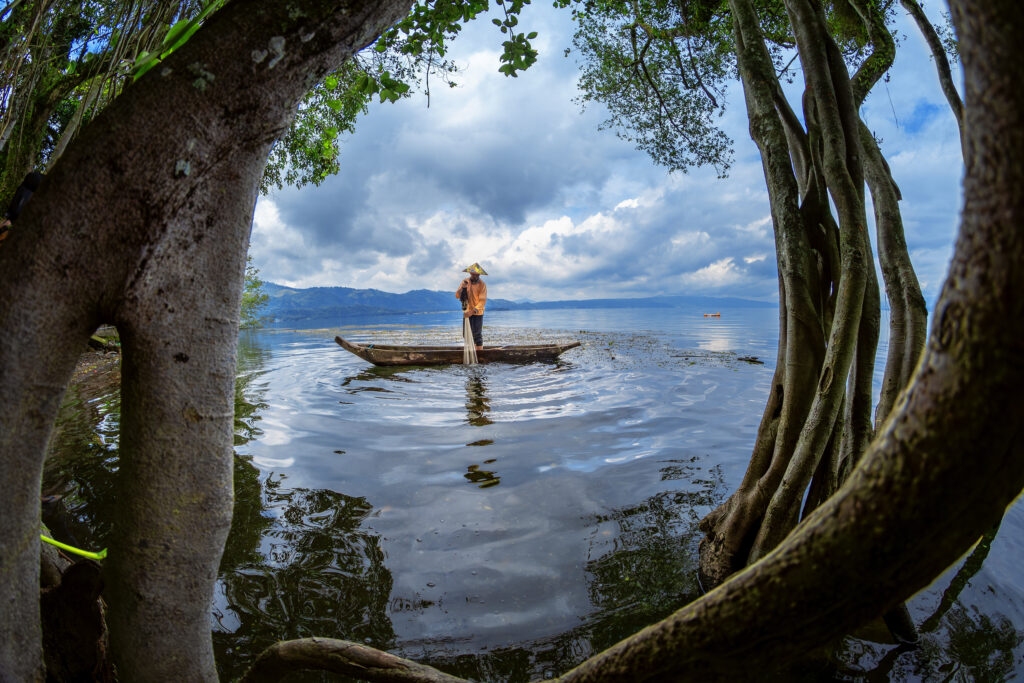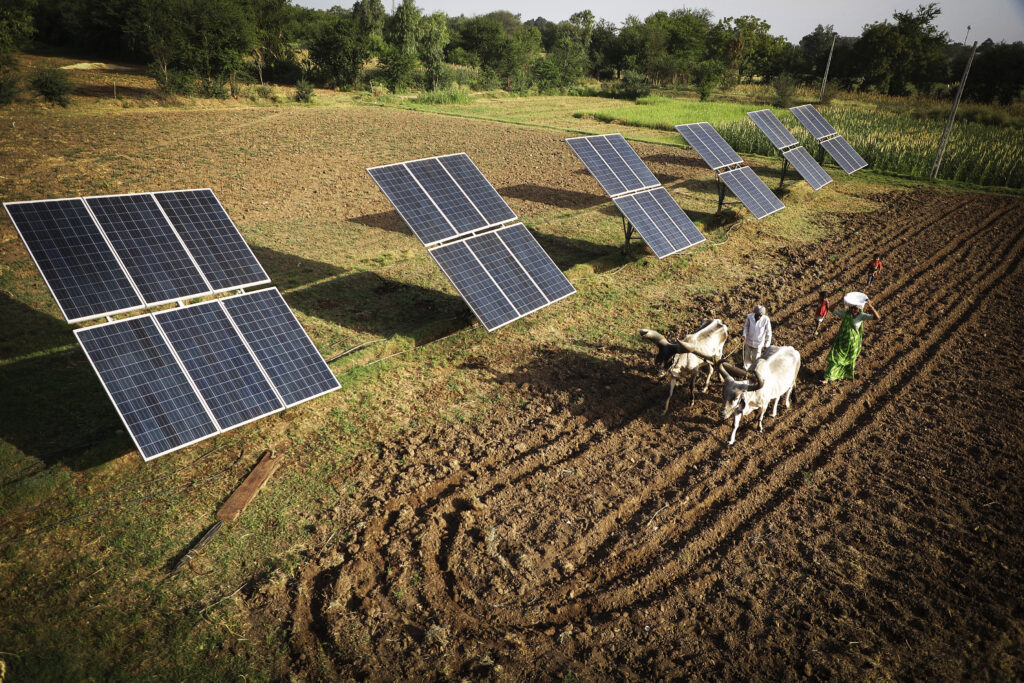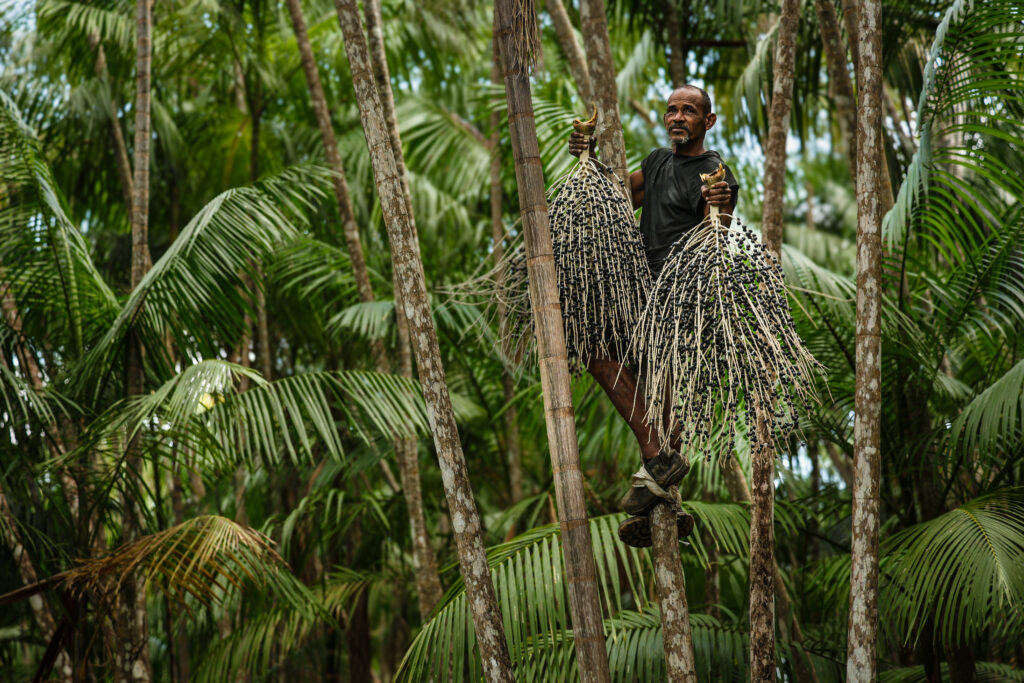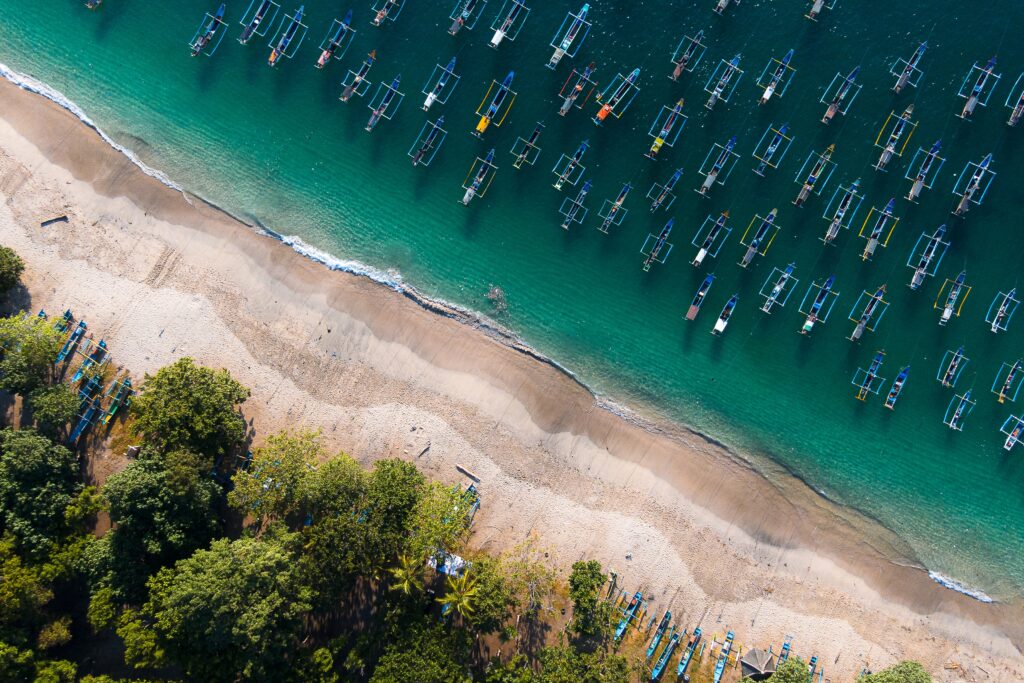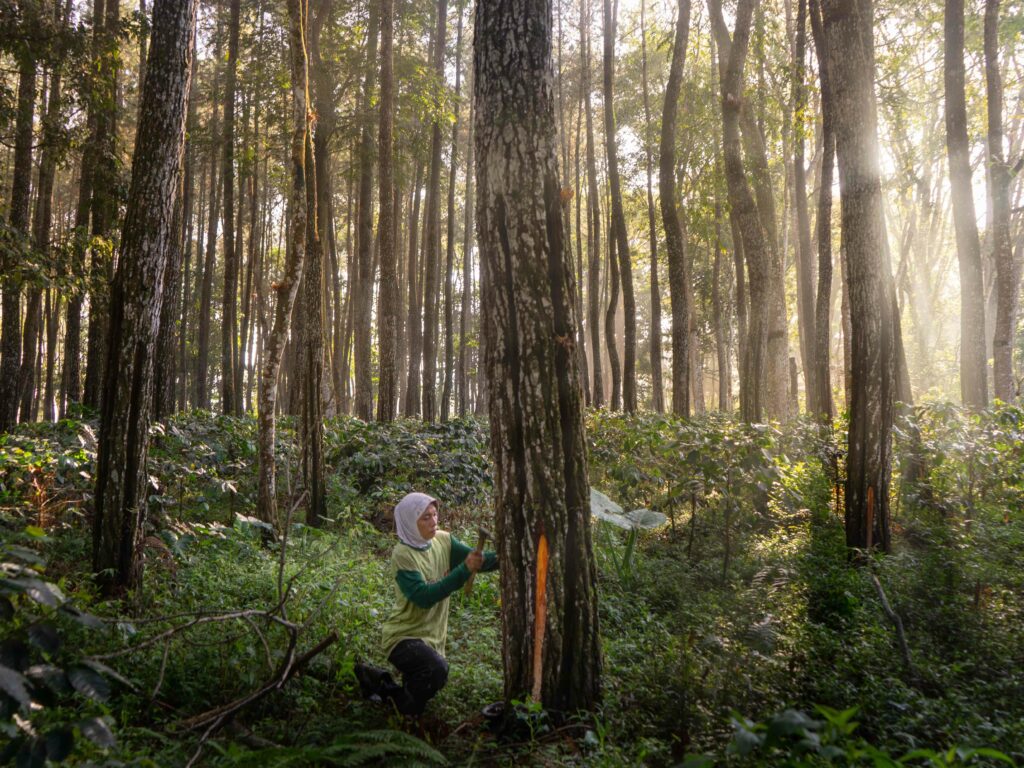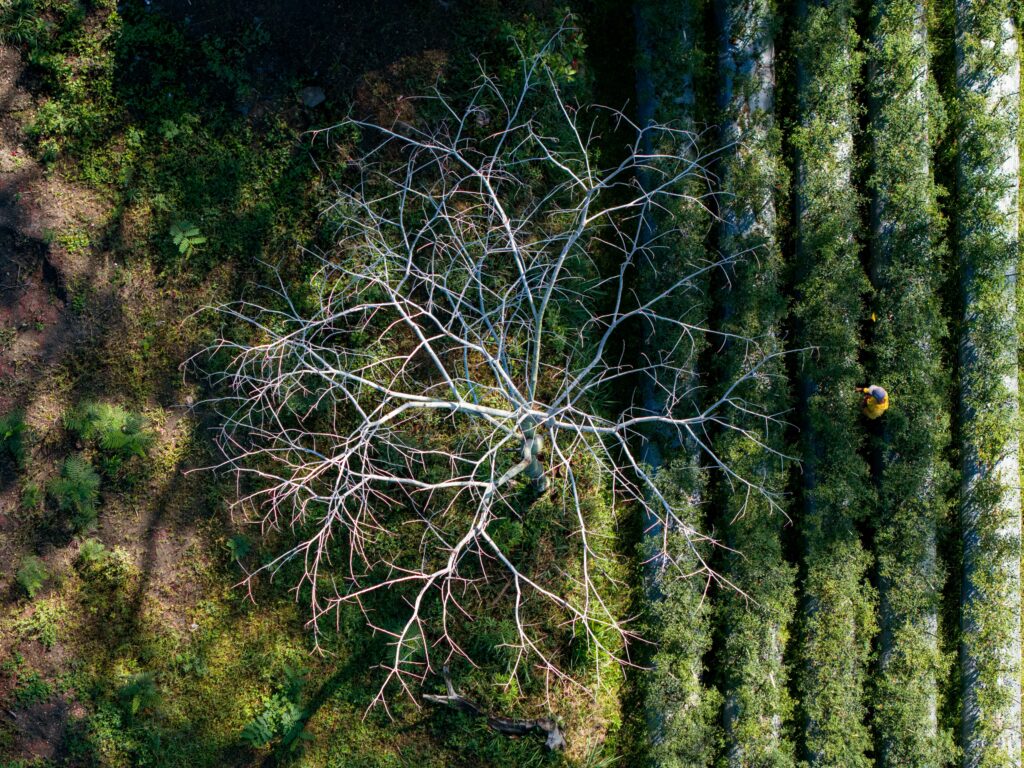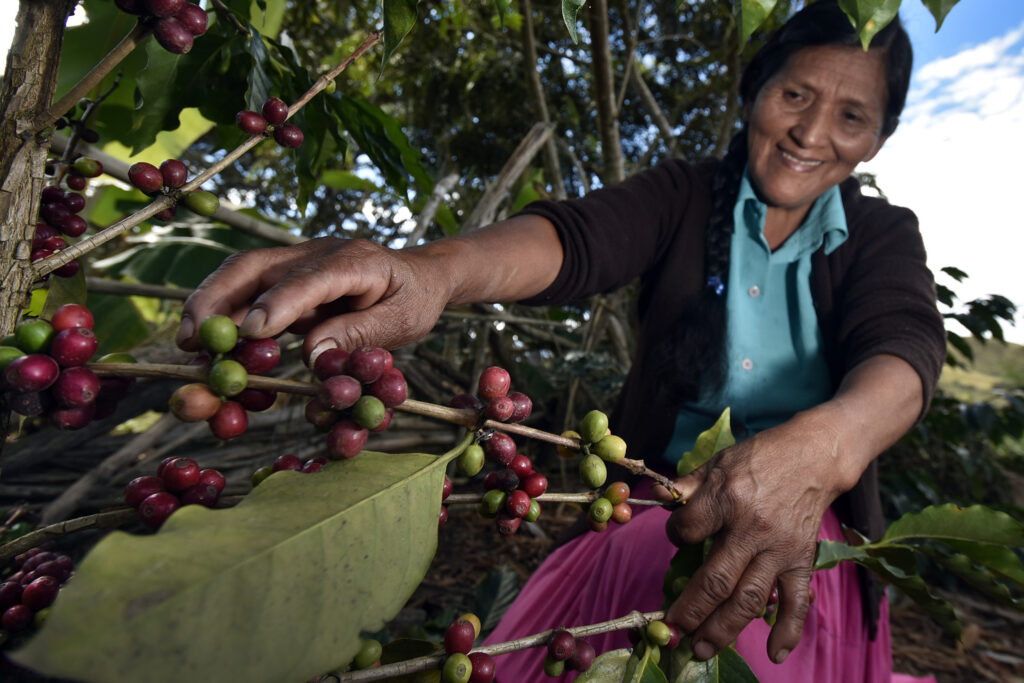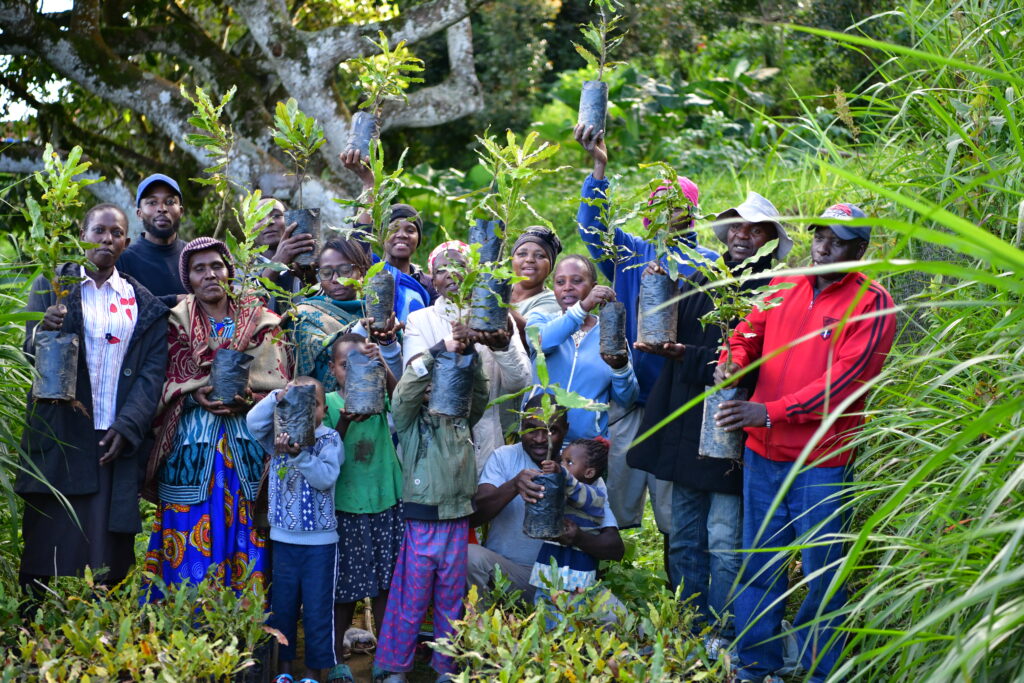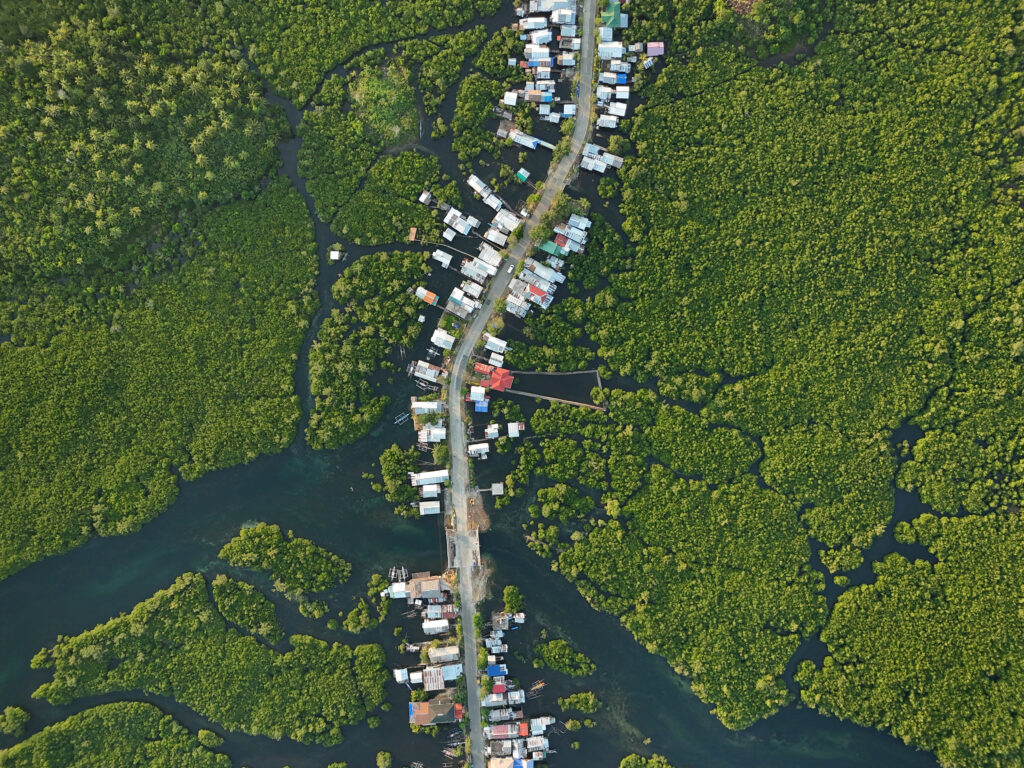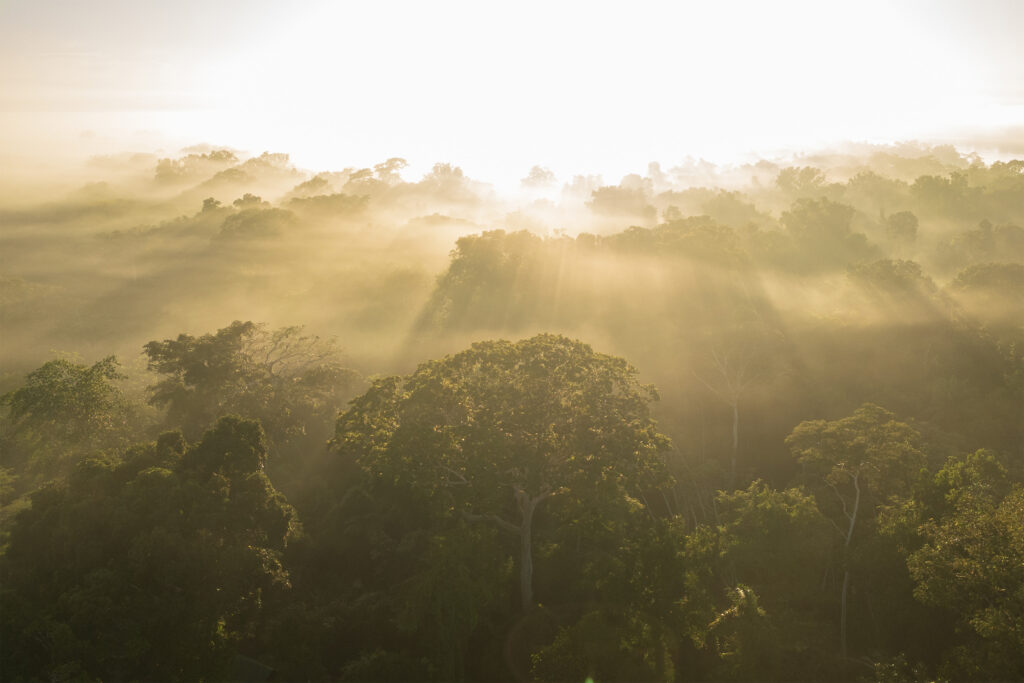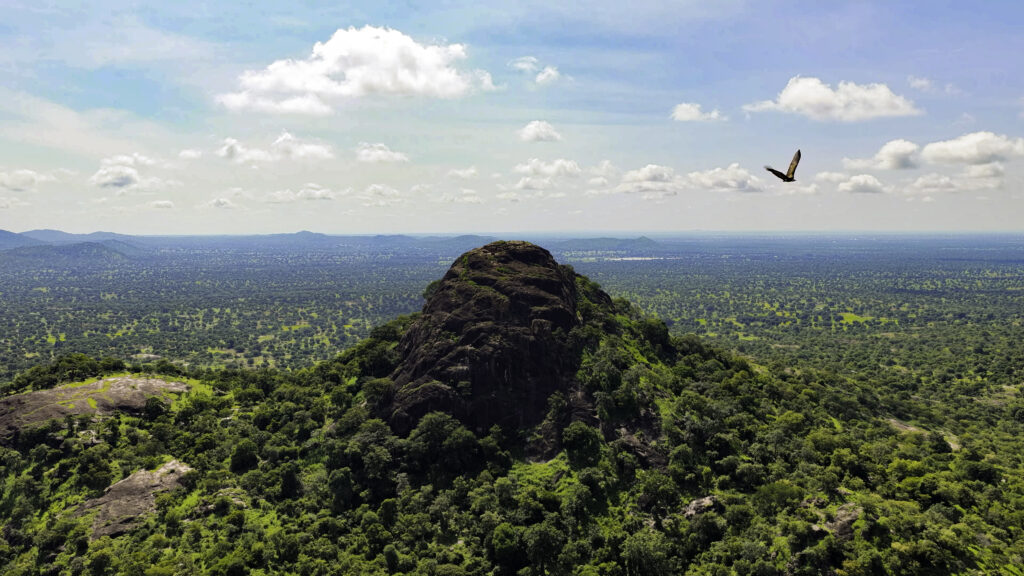Cast Your Vote: Help Us Choose the Popular Vote Winner!
Thank you for submitting your photos!
We received thousands of inspiring entries from around the world, showing how trees, people, and climate come together in powerful stories of life, resilience, and change.
Each photo highlights the beauty and urgency of our planet’s biodiversity — from forests and farms to wetlands and drylands — revealing how people, nature, and solutions meet across diverse landscapes.
Now it’s your turn to take part again! Explore all the shortlisted entries below and vote for your favourites. You can cast up to five votes per day until 12 November.
• The photo with the most votes will receive the Popular Vote Award.
• Our panel of judges will select the First and Second Place Winners.
Winners will be announced on 17 November through the Center for International Forestry Research and World Agroforestry (CIFOR-ICRAF) website and social media channels and for the possibility of having your work showcased at COP30 in Belém.
If you have any questions, please contact us at PhotoCompetition@cifor-icraf.org.
Finalist photo
Living in green
Wae Rebo, a remote and traditional village in East Nusa Tenggara Indonesia, is still living in harmony with Mother Nature. Preserving the forest while cultivating the land as coffee farming becomes the village legacy from generations to generations.
War Rebo Village, East Nusa Tenggara, Indonesia
Coripata reforestation
A park guard plants a seedling of the \"Queñua\" tree, a native plant of the highlands, in Coripata National Park, Pongo, La Paz, Bolivia. This is part of a citizen reforestation initiative in sub-Andean areas, together with park rangers from the National Protected Areas Service (SERNAPI) of Bolivia. These trees take a long time to grow, but are highly resistant to wind and the altitude, nearly 4,000 meters below the Andes, and more than 50 trees have been planted. The trees will primarily help retain water naturally in the event of droughts that may occur in the town of Pongo and the transformation of the landscape.
Pongo, La Paz, Bolivia.
Morning reflections
As the golden sun rises over a tranquil river, local fishermen begin their day surrounded by mist and reflection. This serene moment captures the timeless connection between humans and nature, where life, labor, and landscape flow together in perfect harmony across Myanmar’s rural waters.
Myanmar
Beautiful misty morning with views of green rice fields below the mountain
A soft morning mist blankets the foothills of the mountains, creating a serene and beautiful atmosphere. Below, expanses of green rice paddies stretch out, creating a landscape that harmoniously blends nature and human life. The rice growing luxuriantly on these mountain slopes reflects not only the fertility of the soil but also the diligence of the farmers who maintain a balanced ecosystem. This misty morning panorama provides a vivid illustration of how mountains, rice paddies, and humans are interconnected in a sustainable cycle that supports shared life.
North Bengkulu, Indonesia
Returning home
It\'s a scene of daily lives of cows and shepherds in the country. Every single day, shepherds bring their cows out in the forest at mid day in order to feed them naturally. The time cows are fully get fed they are taken back home when the sun is setting. This is how forest are important both for human and other living existences.
Bagan, Myanmar
Where the river meets the sun
At the mouth of the Kongo River, where mangroves cradle the shoreline and the Indian Ocean breathes against the land, life unfolds in harmony. As the sun descends, the wetland turns to liquid gold, a tranquil moment that draws revelers and fishermen alike to glide over the water. Here, the mangrove roots are not just guardians of the coast; they are anchors of livelihood, beauty, and balance. This landscape captures a living dialogue between nature and community. A reminder that sustainable futures depend on how we nurture the delicate meeting point between land and sea
Kongo River, Kwale County, Kenya
Sunset light over the river
sun sets over the Sangu River in Chittagong, a fisherman makes his way home with his catch, a testament to his resilience and dependence on these waters. However, widespread droughts and the impacts of climate change threaten the very existence of rivers across Bangladesh, endangering the livelihoods of countless communities that rely on them. Urgent action is needed to protect these vital waterways and secure a sustainable future for all
Chittagong. Bangladesh
The green line
From above, the Noolturesh River is marked by a green corridor of trees that trace its path through Kajiado. On one side, fertile farms thrive; on the other, dry pastoral lands stretch toward the horizon. The trees lining the river are more than just a boundary; they are guardians of water, soil, and life, anchoring a fragile balance between people, livestock, and the land. The river feeds farms and settlements downstream, yet upstream irrigation and water diversions threaten its flow, leaving communities further along vulnerable. This makes tree-growing initiatives along the Noolturesh especially vital, strengthening the riverbanks, protecting water sources, and ensuring that this lifeline continues to nourish both people and ecosystems for generations to come.
Kajiado County, Kenya
Coffee and rubber agroforestry in Jember
A coffee and rubber farmer taps rubber in the Mount Gumitir area of Sidomulyo Village, Jember Regency, East Java, Indonesia. Farmers in Jember are developing sustainable agriculture through an agroforestry program. Agroforestry is an agricultural system that combines plantation crops with forest plants or productive trees. In this system, coffee is grown alongside trees that provide environmental and economic benefits.
Indonesia
Whisper of wings
In the stillness of a heartbeat, the hummingbird carries the promise of flight.
Samacá, Boyacá, Colombia
Mangrove eco-park: Where nature heals and communities thrive
Once a barren, muddy coastline scarred by pollution, Bakhawan Eco-Park in New Buswang, Kalibo, Aklan now breathes life as a 220-hectare man-made mangrove forest—an inspiring symbol of restoration and resilience. Launched in 1990 through the vision of local government and NGOs, this reforestation initiative was born out of necessity—to shield the town from floods, storm surges, and the looming threat of climate change. Today, it’s more than a forest. It’s a living sanctuary teeming with mangrove species, fish, crabs, and migratory birds—an ecosystem reborn. But its impact stretches beyond the environment. For the local community, Bakhawan has sparked new hope: sustainable crab and fish harvests have revived livelihoods and strengthened food security. In this photo, a family share a joyful moment over a freshly caught crabs—a powerful image of nature’s generosity and the legacy we pass on. Celebrated globally, including accolades from the UNFAO and the Golden Eagle Award, Bakhawan Eco-Park is not just a success story—it’s a beacon of what’s possible when people and planet grow together.
kalibo aklan, philippines
Sowing hope: Women of Sundarbans nurture mangrove future
The landscape itself tells a story: the dry, grassy foreground contrasts with the lush, green density of the mangrove forest, highlighting the importance of the women\\'s work in expanding this vital ecosystem. Their collective effort is not just about planting trees; it\\'s about safeguarding their homes and livelihoods against the increasing threats of cyclones and sea-level rise in this vulnerable deltaic region. It\\'s a powerful visual testament to community-led conservation and the essential role of women in environmental action.
West Bengal, India
Sustainable agriculture
Farmers grow their crops on long, thin vegetable gardens which float on a river. Each strip of land is between 200ft and 300ft long, and farmers cultivate up to 300 types of vegetable, navigating the channels between them by boat. The gardens rise and fall with the swelling waters of nearby rivers, which restrict the time that crops can be grown and make land a precious commodity for local residents. The area in Pirojpur, Bangladesh covering 400 hectares, shows the extraordinary array of crops include beans, beet, pumpkins, okra, aubergine, cucumber, red amaranths, gourds, turnip, cauliflowers, turmeric and chillies.
Pirojpur, Bangladesh.
Kerinci: Guardian of forests, sustainer of life
From above, the foothills of Mount Kerinci reveal a vital bond between nature and people. Dense tropical forests on the slopes protect the climate and safeguard biodiversity, while fertile farmland below sustains local communities. This image calls for awareness of the fragile balance between conservation and survival, affirming Kerinci’s role as both an ecological stronghold and a living landscape for future generations.
River of life: A border of bounty and resilience
The Kabala Costain River flows between Kaduna North and South, nourishing the land and its people. Farmers cultivate crops on its banks, while Fulani herders graze livestock on the pastures after harvest. Despite houses being built close to the river\\'s edge, the community coexists with its rhythms, respecting its power and bounty. This image captures the beauty and resilience of the Kabala Costain River, a lifeline for Kaduna State. The river supports a diverse community and highlights the importance of preserving the natural environment for future generations.
Kaduna State, Nigeria.
Tapping Sago in the Korowai Hinterlands
Aerial photo of sago tapping activities in Dayo Hamlet, Yanimura District, Boven Digoel Regency, Papua, Thursday (March 5, 2020). Sago (Metroxylon sagu Rottb) is a plant native to the Indonesian archipelago, with the world\'s largest reserves located in Papua. According to data from the Papua Regional Research and Development Agency, the area of sago plantations in Papua spans 6.2 million hectares, the largest in the world. Of this, 4.7 million hectares are sago forests.
Papua, Indonesia
Gavkhouni: Where the river ends — and life fades
Once a thriving wetland at the end of the Zayandehroud River, Gavkhouni has now turned into a barren salt plain. From above, the cracked earth draws silent patterns of loss — a memory of water, life, and migration. For centuries, this wetland sustained birds, fish, and the people of central Iran. But years of drought, dam construction, and mismanagement have silenced it. This image captures not only the death of a landscape but a reminder of how deeply human survival is tied to nature’s balance — and how fragile that balance has become.
Iran, Isfahan
Fishing in the Dayak Tomun style
Besides fishing, netting is also one of the Dayak people\'s ways of catching fish. This method is also quite good so as not to overdo it when catching fish. The Tomun Dayak people live side by side with nature and are still very dependent on forests and rivers.
Lamandau, Indonesia
Singkarak lake fisherman
A traditional fisherman is fishing in Lake Singkarak, West Sumatra, Indonesia.
West Sumatra, Indonesia.
Mother earth
Sustainability is like taking care of Earth in a nice maneer. The picture clearly describes the state of art of science and technology. Solar pannels for the sun energy, the cow fielding the farms and the habitants taking care if everything. Overall behind the scenes of pictures are even more environment friendly than it seems to be. To look to this picture is going back to this land where humans evolved for the mother earth.
Gujarat, India
Harvesting sustainability
Valter dos Santos Barbosa displays his harvest while hanging from the top of an açaí tree. The fire that once ravaged the forest has given way to regeneration and the livelihood of local families in the village of Monsarás, in the Brazilian Amazon. Valter and other workers are examples of those who have changed the land\'s reality through the Agroforestry System, replacing pineapple monoculture with açaí cultivation alongside other crops and using natural techniques, such as interspecies shading and the use of dried açaí seed fertilizer, known as \"crowning,\" reducing environmental impact.
Salvaterra, State of Pará, Brazil.
Papuma beach
Papuma Beach is a tourist attraction in Jember Regency, East Java Province, Indonesia. The name Papuma is actually an abbreviation of \"Pasir Putih Malikan\" (White Sand Malikan). Papuma Beach is located in Lojejer Village, Wuluhan District, Jember Regency, East Java, Indonesia.
Lojejer Village, Jember Regency, East Java, Indonesia
Tapping pine resin
The daily life of a woman who works as a pine resin tapper in Darungan Village, Sumberwringin District, Bondowoso Regency. She taps pine resin every day in a coconut shell container. When the container is full, she collects the pine resin at the collection post in Darungan Village, where it is weighed. She also works while planting coffee trees among the pine trees, the harvest of which will be sold to meet her family\'s daily needs.
Darungan Village, Sumberwringin District, Bondowoso City
Between life and death
Amid rows of thriving green plants stands a single barren tree a silent witness to the changing climate. It speaks of uncertain seasons, delayed rains, and the growing heat of the earth. Yet, humanity endures tending to life with hard work and hope.
Klaten, Indonesia
Coffee harvesting
An organic coffee producer harvests the beans as part of the harvest on her plot. Bolivian coffee stands out for its excellent quality and is widely exported.
Apollo, La Paz department, Bolivia
Rooted in hope: Macadamia trees nurturing lives and landscapes
In this vibrant water catchment area in Taita Hills, community members proudly hold macadamia seedlings—symbols of hope, resilience, and renewal. Through the dedicated efforts and support from conservation organizations, these trees are not just restoring forests but also rebuilding livelihoods. As the seedlings grow, they promise a future rich in biodiversity, sustainable income, and improved nutrition from the nourishing macadamia nuts. This is more than reforestation; it’s a powerful story of how people, nature, and innovation unite to heal the land and empower generations to come.
Iyale-Wundanyi, Kenya
Amidst the mangrove forest
In Barangay Asinan, Pilar, Siargao in the Philippines, life is deeply connected to the mangrove forest that surrounds the community. These mangroves provide more than just beauty—they are a vital source of livelihood. Local fishers harvest crabs from the mangrove roots and sell them in nearby markets, sustaining families and strengthening the local economy. At the same time, the mangrove forest serves as a natural shield against strong waves and storms while absorbing carbon that helps combat climate change. For the people of Asinan, the mangroves are more than trees—they are their lifeline, their protection, and their hope for a sustainable future.
Siargao, Philippines
A foggy sunrise in the vast Amazon rainforest
The first rays of the sun bathe the rainforest; the golden mist of dawn wraps the treetops like a mantle, and the sunlight softly filters through the jungle. The landscape that emerges is unique; a calm is felt in the midst of the forest as it slowly appears from the thick fog, where the immensity of the rainforest reveals itself with its towering trees.
Madre de Dios, Peru
